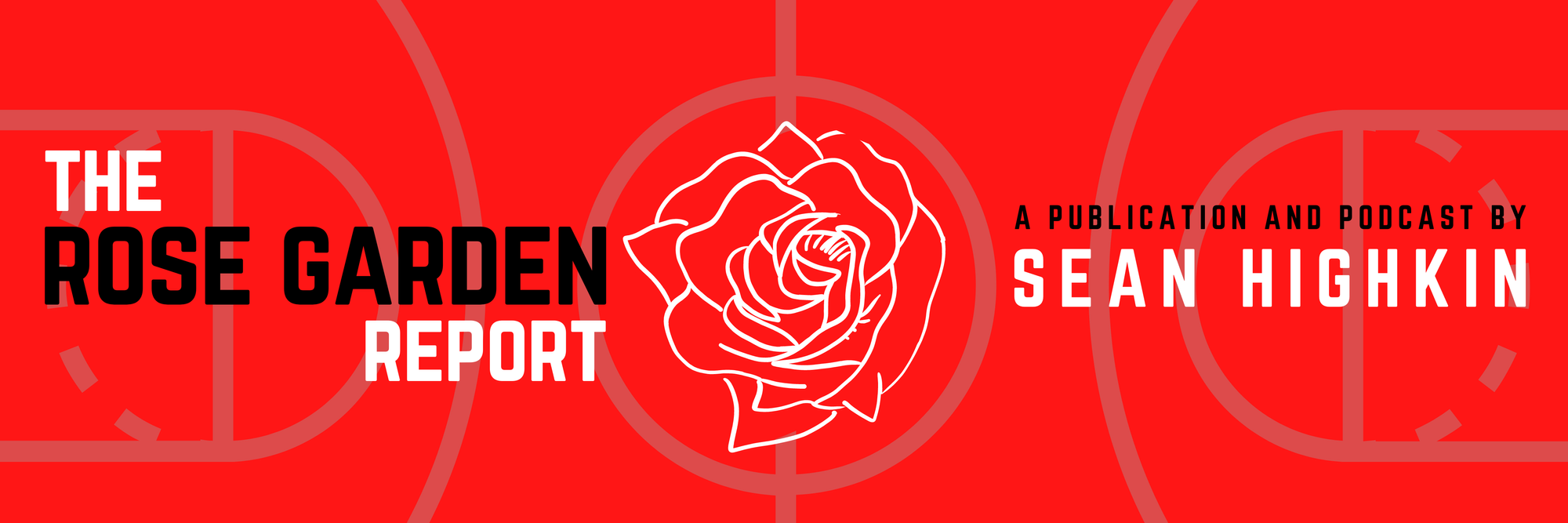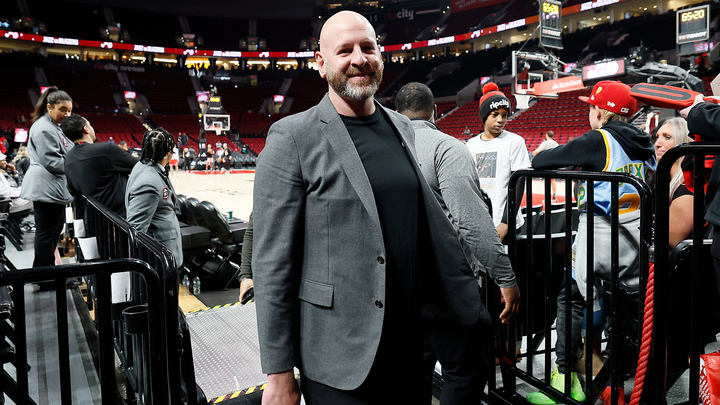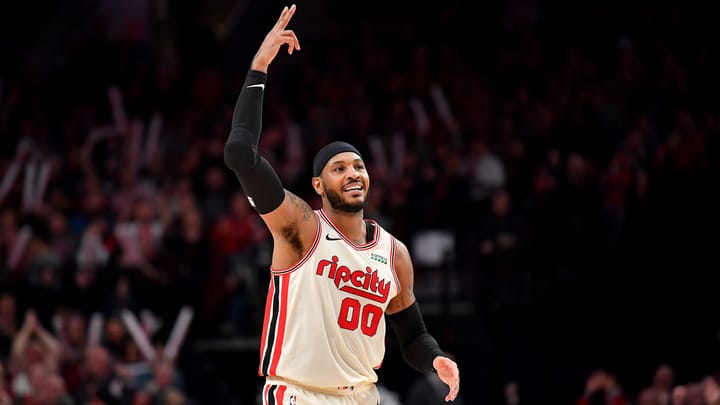How Do the Trail Blazers Stack Up With the NBA's Other Rebuilding Teams?
Taking stock of the rest of the league's race to the bottom.

The standings don’t reflect it anymore, but the Trail Blazers are still in a rebuild.
Coming out of the All-Star break, after losing last Thursday to the Lakers, the Blazers have won two straight, over two fellow rebuilding teams in the Charlotte Hornets and Utah Jazz. The next two games of their seven-game road trip, tonight and on Friday, are against two more of those teams: the Washington Wizards and Brooklyn Nets.
The Blazers are one of six teams in the NBA this season that can definitively be called “rebuilding teams,” along with the Nets, Jazz, Hornets, Wizards and Toronto Raptors. New Orleans and Philadelphia are down there with those teams record-wise, but the Pelicans and Sixers both entered the year intending to compete for the playoffs and had their season go off the rails due to injuries. Detroit, the worst team in the NBA each of the past two seasons, has graduated from the depths of rebuilding status and are currently a top-six team in the east. So for our purposes, we’re keeping it to those six teams that entered the season intending to lose a lot and are currently doing so.
With Portland in the middle of this stretch of playing those teams, it’s a good time to look at how they stack up, both now and in the future.
I boiled each of these six rebuilds down to six central questions:
- How long has the rebuild been happening?
- Have they found a foundational star yet?
- Is there other young talent worth getting excited about?
- Do they have a head coach that will be there long-term?
- What’s their cap situation? Do they have a lot of money on the books for a lot of years?
- Do they have a lot of future draft picks to work with, either in trades or in accumulating talent?
Which of these teams’ rebuilds you think is in the best shape going forward depends on what you value. But here’s how they compare:
How long have they been rebuilding?
Nets: This is year one of the full teardown. After trading Kevin Durant and Kyrie Irving during the 2022-23 season, they tried to stay competitive last year with Mikal Bridges as a centerpiece but pulled the plug in June.
Jazz: This is the third season of the post-Rudy Gobert/Donovan Mitchell era.
Hornets: Pretty much constantly since their first expansion season in 2005, minus a couple of low playoff seeds over the years. But this iteration is relatively new—current owners Gabe Plotkin and Rick Schnall bought a majority stake in the team from Michael Jordan in 2023, and hired GM Jeff Peterson last year.
Raptors: This is the first full season of the teardown, after they traded Pascal Siakam and O.G. Anunoby during last season.
Wizards: This is effectively year two. Washington hired former Clippers executive Michael Winger to replace Tommy Sheppard as the top decision-maker in the summer of 2023, and he traded away Bradley Beal and Kristaps Porzingis that offseason. Washington won 15 games last season and will probably win around that many this season.
Trail Blazers: This is year two of the post-Damian Lillard era, but they ended the two years before that by shutting players down to tank. There are some people who feel this is secretly the fourth year of the rebuild, but that’s only been the explicit goal since Lillard was traded before the 2023-24 season.
Do they have a franchise player?
Nets: I don’t know if anybody currently on the Nets’ roster will still be there in two years. A lot of future trade chips and fringe prospects, not a whole lot of a foundation.
Jazz: As of now, it’s Lauri Markkanen, and he’s a legitimate All-NBA caliber player. There were trade rumors with him all last summer and will probably continue to be going forward unless the Jazz get better quickly. But for now, they do have one.
Hornets: By default, it’s still LaMelo Ball despite questions about his health and whether or not he’s a winning player. Long-term, it could be Brandon Miller. But they could really use some lottery luck.
Raptors: They’re paying Scottie Barnes like one. Whether or not he actually is remains to be seen.
Wizards: No.
Trail Blazers: Also no.
Is there a base of young talent with upside?
Nets: Not really. Most people thought Cam Johnson and Nic Claxton would be traded before the deadline. They very well may be this summer. Outside of scoring guard Cam Thomas, there isn’t much to be excited about long-term on the current roster.
Jazz: Utah has a lot of young players, including Walker Kessler, Keyonte George, Kyle Filipowski, Isaiah Collier, Brice Sensabaugh, Cody Williams and Taylor Hendricks. Kessler is the most proven at this point, followed by George and Filiopwski. The rest are still a mystery box. Hendricks appeared on the verge of a breakout before suffering a horrific leg injury early this season. But there’s talent here to work with.
Hornets: Despite being in his fifth year, Ball is still only 23. Miller, who’s out for the year, came in second in Rookie of the Year voting last season and still has a bright future. Mark Williams counts, despite the very awkward rescinded trade with the Lakers at the deadline. This year’s lottery pick, Tidjane Salaün, is a very long-term project.
Raptors: Outside of Barnes, most of their rotation is guys who are in the in-between zone of young players and veterans and making a lot of money. But last year’s No. 10 overall pick, Gradey Dick, has made some steps this season and rookie Jamal Shead is showing promise.
Wizards: This front-office regime’s first two drafts definitely have some promise with Bilal Coulibaly, Alex Sarr, Bub Carrington and Kyshawn George.
Trail Blazers: This is the area where the Blazers are in much better shape than most of these other teams. The franchise’s last three trips to the lottery resulted in Shaedon Sharpe, Scoot Henderson and Donovan Clingan, and they’ve added Toumani Camara and Deni Avdija in trades in that time. Camara and Avdija in particular are players who are still young enough to be “prospects” but would be starters on playoff teams today.
Do they have their coach for the long haul?
Nets: The early returns on Jordi Fernandez’s first season as a head coach look like they got this hire exactly right, to the point that I’ve seen some Nets fans panicking that he’s winning them too many games and messing up their lottery odds.
Jazz: Will Hardy is very well-regarded and the organization seems all-in on him.
Hornets: Charles Lee is a first-timer. They haven’t won much, by design, but Lee is well-respected around the league and players seem to like him. Who knows how long it will be before the Hornets are good again, and whether Lee will still be in the picture by then, but put them down as a “yes” for at least the next few years.
Raptors: Darko Rajaković is in his second season. It’s tough to know where he stands as far as job security because it’s tough to know what the Raptors’ long-term plan is.
Wizards: Probably not. Brian Keefe took over as interim head coach during last season after Wes Unseld Jr. stepped down, and then got the full-time job over the summer. Usually, when rebuilding teams hire the in-house candidate, it’s because they come cheap and development matters more than winning when you’re where the Wizards are.
Trail Blazers: All signs have pointed for a while to Chauncey Billups being on his way out at the end of this season.
How is their long-term financial outlook?
Nets: Brooklyn has very little money committed beyond this season. D’Angelo Russell ($18.6 million) and De’Anthony Melton ($12.8 million) are expiring, and other than Claxton and Johnson, they have almost no significant salary. They could have max cap space this summer.
Jazz: Markkanen has four years remaining on a massive extension signed last summer that will pay him north of $46 million annually through 2029. Their other big salaries, like John Collins ($26.5 million), Collin Sexton ($19.1 million) and Jordan Clarkson ($14.2 million) come off the books after next season.
Hornets: Ball is in year one of a massive five-year max that goes through 2029 (when he will earn $46.4 million. Miles Bridges has two years left at over $20 million per year, Jusuf Nurkic ($19.3 million) is up after next season and Grant Williams and Josh Green each have two years left.
Raptors: Toronto has by far the most future money committed of any of these teams, even more so after trading for Brandon Ingram at the deadline and immediately signing him to a three-year, $120 million extension. Barnes has yet to begin the five-year, $224 million rookie max extension he signed last fall, and Immanuel Quickley and R.J. Barrett both have multiple years left at big money.
Wizards: No significant money past the 2026-27 season, when Jordan Poole’s money ($34 million) is off the books. Their other two big salaries, both of which they picked up at this trade deadline, are up after next season: Khris Middleton at $34 million and Marcus Smart at $21 million. Malcolm Brogdon’s $22.5 million is off this summer.
Trail Blazers: Two of the Blazers’ highest-priced veterans, Deandre Ayton ($35.5 million) and Anfernee Simons ($27.6 million), are only under contract through next season and then come off the books. Jerami Grant’s deal runs for three more seasons after this one at big money, including a $36.4 million player option in 2027-28. If things stay as-is, their cap sheet cleans up considerably next summer—just as a potential extension for Sharpe could kick in. Right now, their roster is still expensive.
How much future draft capital do they have?
Nets: Brooklyn picked up a ton of draft assets in the Kyrie Irving, Kevin Durant and Mikal Bridges trades as well as other deals. They owe a 2027 swap to Houston but otherwise have control of all their own firsts and have nine first-round picks or swaps from other teams.
Jazz: Danny Ainge is second only to Sam Presti in his eagerness to hoard picks. Right now, the Jazz have seven first-round picks and swaps from other teams, mostly Cleveland and Minnesota from the Donovan Mitchell and Rudy Gobert trades in 2022. They had even more before they traded away the least favorable of a few of those years to Phoenix for the Suns’ own 2031 first-rounder.
Hornets: Charlotte controls all their own first-rounders going forward. They only have two incoming firsts from other teams (one from Dallas and one from Miami) but have 10 future second-rounders through 2031.
Raptors: Toronto has all its own firsts and Indiana’s 2026 first, top-four protected.
Wizards: Only four first-round picks or swaps coming in from other teams, but the Wizards are owed 14 future second-rounders between now and 2030.
Trail Blazers: Portland owes its first-round pick to Chicago, lottery-protected through 2028. Beyond that, they own all their own firsts, have swap rights with Milwaukee in 2028 and 2030, and will have two out of three of their own, Milwaukee’s and Boston’s firsts in 2029, with the second-most favorable owed to Washington.




Comments ()